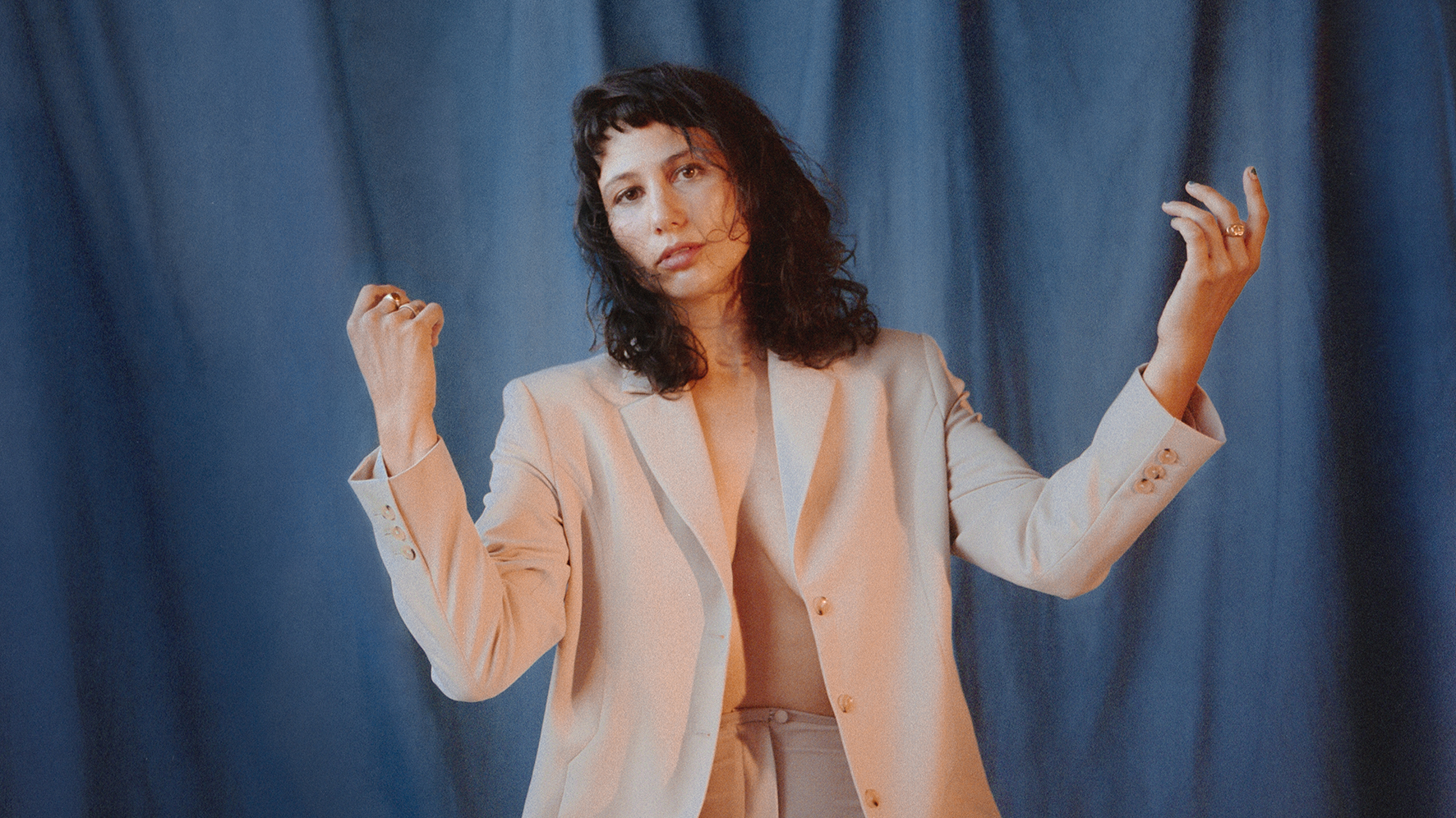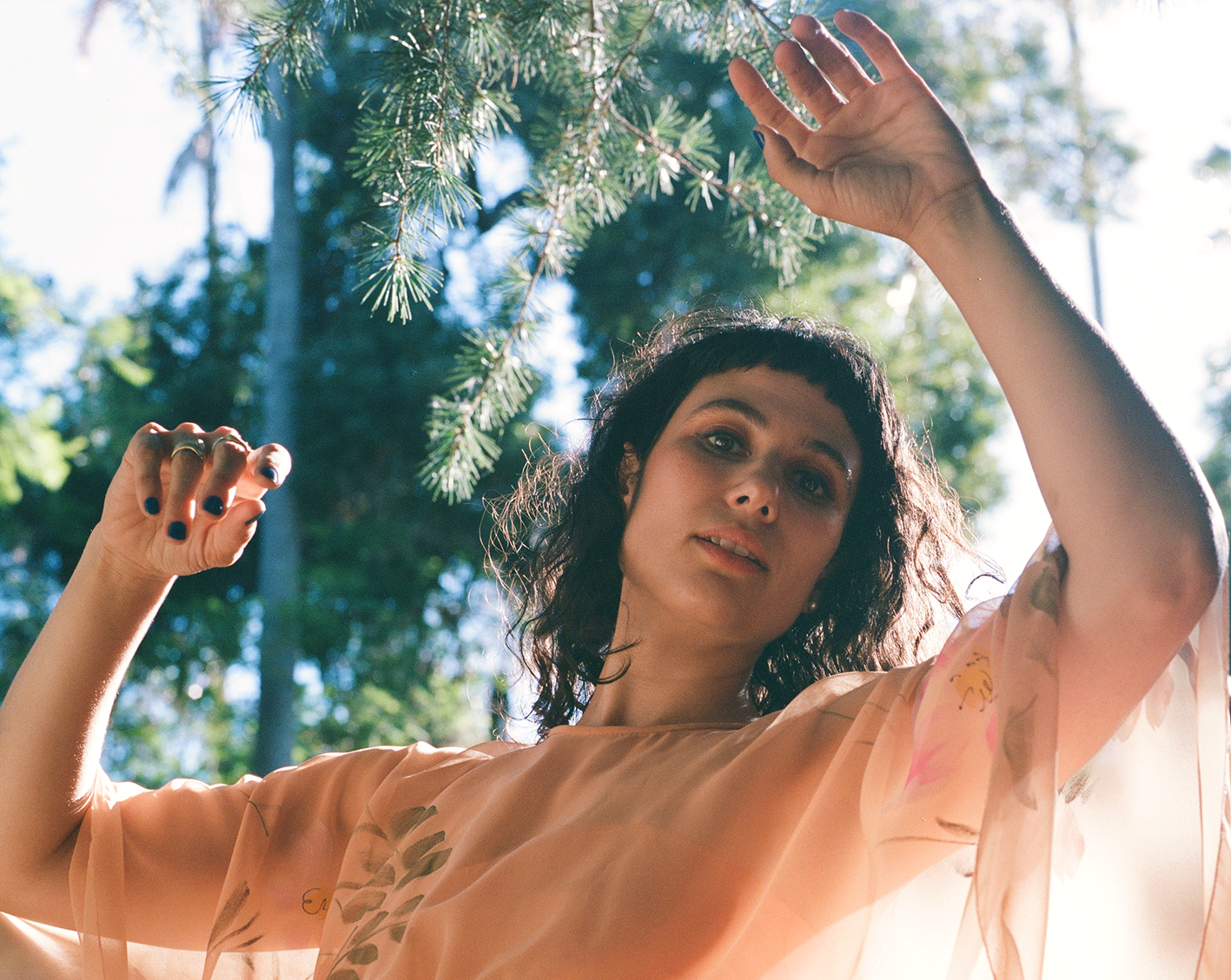Lisel: "Antares Auto-Tune has become one of my most treasured creative tools"
Classical opera singer by day, experimental electronic artist by night, vocalist and producer Eliza Bagg is dissolving boundaries between disciplines

Vocalist and producer Eliza Bagg’s music brings polar opposites together. A classically trained singer with a specialism in Renaissance polyphony, she’s also working at the bleeding edge of contemporary experimental music.
Bagg has spent the past decade collaborating with renowned innovators - Ben Frost, Nico Muhly and the pioneering ensemble Roomful of Teeth, to name a few - while using her work as a solo electronic artist to dissolve boundaries between Medieval and modern, minimalist and maximalist, man and machine.
Equally comfortable soloing with the New York Philharmonic as she is processing vocal improvisations through complex effects chains in Ableton Live, Bagg synthesizes a spectrum of diverse influences into a singular project through her music as Lisel.
On her new record, Patterns for Auto-Tuned Voices and Delay, Bagg stretches the sonic capabilities of the human voice to its extremes. Beginning with vocal improvisations grounded in Medieval choral music and 20th-century minimalism, she transformed these raw materials into new forms through vocal processing techniques informed equally by the experimental techniques of Holly Herndon and Lyra Pramuk as they are the sugar-coated hyperpop of Charli XCX.
“I rely on my body as an object and resonant instrument,” Bagg tells us. “But I’ve developed a vocal processing system that allowed me to change the idea of what my instrument is. Now, what begins inside my body and continues on the computer is one process, and the ideas that result from it are my instrument.” We caught up with Lisel to find out more about the ideas, equipment and studio techniques behind her radical approach to music-making.
When did you start making music, and how did you first get started?
“I’ve been making music in different capacities for my whole life - I grew up playing classical violin, switched to classical singing (opera) in college, and started playing in a folk band around the same time. In my early 20s I was in a synth rock band with four guys, and I started making music on my own as Lisel about five years ago, in 2018.
Get the MusicRadar Newsletter
Want all the hottest music and gear news, reviews, deals, features and more, direct to your inbox? Sign up here.
“To be honest, I started making my own music in earnest when I got Ableton and allowed myself to improvise and fool around with less of an agenda, goal, or structure in mind — thinking first about sound and gesture. I spent that first year improvising every day, and ended up with so much material to layer and manipulate.
“I really enjoy a process that combines the freedom of improvisation with the precision, toil and scrupulousness of listening, editing, manipulating — that part is where Ableton really allowed for a new kind of creative flow.
I spent that first year improvising every day, and ended up with so much material to layer and manipulate
“I was inspired at the time by a good friend of mine — composer/electronic musician Daniel Wohl — who really encouraged me to use the platform. I was able to break free from some of the mental obstacles that had been in my way for a long time, a fear of breaking away from traditional forms and allowing myself to follow impulses.
“I got into artists who used both sound and form in unusual ways - Oneohtrix Point Never, Kelela, Ryuichi Sakamoto, Kate NV, Meredith Monk, SOPHIE, Carl Stone. I went through a similar process when I was making this album — a daily regimen of vocal improvisations.”
Tell us about your studio/set-up.
“I have a home studio that’s been set up in my current house since March 2020. I have a few synths I rely on heavily - Juno-106, Moog Sub 37, Korg Minilogue, Korg Volca Keys, and an Omnichord.
“All of the vocal processing though, is done on the computer — I use Antares Auto-Tune plug-ins and most of the delays are just in Ableton. I like the simplicity of doing so much inside the DAW — it makes it very clear and there’s a nice relationship to the artistic intention and how it manifests visually on the computer.
The Antares Auto-Tune plug-in has become one of my most treasured creative tools
“However, sometimes I feel the reliance on the computer can inhibit a kind of randomness that can inspire creative impulses. I’d like to incorporate more hardware into my vocal setup, just for the compositional process — my relationship to certain plugins and processing has grown so familiar that sometimes it’s nice to introduce a new, unfamiliar piece of gear that thwarts the comfortable pathways and habitual creative shapes.”
What DAW (or DAWs) do you use, and why did you choose it?
“I use Ableton — I have used Logic in the past, but I really prefer Ableton when making work because it feels like a more intuitive space to follow creative impulses. For whatever reason, it has just always allowed for more experimentation, and a small element of chaos, in the listening, editing, manipulating phase of my process — which is usually when pieces really start to take shape.”
What one piece of gear in your studio could you not do without, and why?
“The Antares Auto-Tune plug-in has become one of my most treasured creative tools, and it is at the basis of most of my compositional work for voices. While my voice is my primary instrument, I really feel like I’ve developed a new instrument that is my voice in relation to the various Auto-Tune plugins and everything they do, and I create work around that specific instrument.”
What's the latest addition to your studio?
I love the Korg Minilogue, but it’s very compliant. The Sub 37 brings its own personality to the party
“I bought a Moog Sub 37 last year while I was making my most recent album, because I wanted an instrument that had its own character and voice — and also had a lot of darker, grittier, more abrasive qualities to contrast the natural femme, ethereal nature of my voice. The Sub 37 feels like it has opinions and agency, and its sounds are an active collaborator in the studio.
“I love the Korg Minilogue, but it’s very compliant — it fulfils my needs. The Sub 37 brings its own personality to the party, and I love the task of forming a relationship, creating a dialogue between my voice and one of its characters.”
What dream bit of gear would you love to have in your studio?
“Honestly, I would love a really really nice vocal mic - a Neumann or something. I recorded this entire album with an AKG C214, which is totally lovely. But I’d love something really special, that brings its own quality to the vocal instrument.”
When approaching a new track or project, where do you start?
“I start with vocal improvisation. My voice is my most intuitive tool, I’ve spent almost my entire life developing intimacy with it, and trust and knowledge of it. I’ve done that through classical voice lessons, singing in church choirs, singing in folk trios, singing operatic arias, singing around the house, singing along to Mariah Carey, singing acrobatic 20th-century music like George Crumb and Philip Glass, improvising with friends.
“I really believe in the deep well that is the years I’ve spent nurturing it as a creative instrument, and I think there are infinite ideas that can come from that. I allow my voice to make impulses of sound, gesture, and melody — and then I edit!”

What other artists do you look to for inspiration?
“So many, and from all over the place. I’m really influenced by the world of Renaissance and Medieval choral singing: masses, motets, and chant by Hildegard, Tomas Luis de Victoria, Carlo Gesualdo, Thomas Tallis, Guillaume Dufay, William Byrd, Monteverdi, etc. — as well as the cantatas and passions of J.S. Bach. I’ve spent so much time singing this music, it has worked its way into my body. This applies too to the work of contemporary classical composers like David Lang, Caroline Shaw, Meredith Monk, Philip Glass, and Steve Reich.
I’ve spent so much time singing this music, it has worked its way into my body
“I actually spend a lot of time listening to current pop artists as well, like Charli XCX, Rosalia (my most listened to artist!), Kelela, Empress Of, Tirzah, Grimes as well as artists from my childhood Mariah Carey, Brandy, Air, Aphex Twin (earlier albums), Stereoloab, Broadcast, Cocteau Twins.
“Obviously I’m also inspired by so many current electronic/experimental artists like Kate NV, Kaitlyn Aurelia Smith, Lyra Pramuk, Holly Herndon, Anna Meredith, Laurel Halo, Mary Lattimore, SOPHIE, Lucretia Dalt, Jlin, Jenny Hval, Eartheater, Oneohtrix, Floating Points — and many more. And of course, experimental legends Laurie Anderson, Carl Stone, Suzanne Ciani, Kate Bush, and Jon Hassel.”
If you had to pick one song/album that’s been most influential on your work, what would it be?
“So difficult! I suppose I might say something like Björk’s Homogenic, just for the sheer amount of hours I’ve spent with the music over many years, and how I felt like it gave me permission to experiment with sounds and form.”
What do you think makes you unique as a producer and musician?
“I think my experience as a professional vocalist in an entirely different discipline allows me to bring a different set of references and musical languages to my work — and that one of my artistic concerns is creating substantive musical connection between the world of electronic/experimental music and that of both ancient and new classical music.
“The other half of my life is spent in a serious relationship with vocal music written before 1750, as well as music currently being written within the “classical” institution, which just means it’s taking into consideration the values and traditions of that genre as much as anything else.
My experience as a professional vocalist in an entirely different discipline allows me to bring a different set of references and musical languages to my work
“Working in that field comes with a knowledge of a whole different set of idiosyncratic concerns that are deeply familiar to me, in rehearsal processes, in conversations about form, harmony, and concept — it has its own internal language that one can only learn after spending years in the rehearsal rooms, backstages, concert halls with the music and the practitioners. Aside from that, there’s just a deep fluency with a whole different repertoire that I’m constantly trying to bring into dialogue with contemporary sounds and technologies.”



I'm MusicRadar's Tech Editor, working across everything from product news and gear-focused features to artist interviews and tech tutorials. I love electronic music and I'm perpetually fascinated by the tools we use to make it. When I'm not behind my laptop keyboard, you'll probably find me behind a MIDI keyboard, carefully crafting the beginnings of another project that I'll ultimately abandon to the creative graveyard that is my overstuffed hard drive.
“The included sample content is not only unique but sonically amazing, as it always was”: Spitfire Audio BBC Radiophonic Workshop review
“We were able to fire up a bass sound that was indistinguishable from the flavour of New Order’s Blue Monday in seconds”: EastWest Sounds Iconic review









